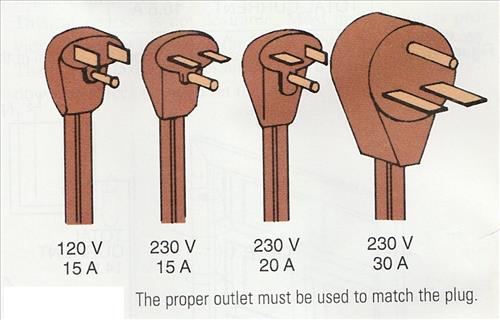

A series circuit will drop (use) some voltage at each load until it dwindles to an insufficient level at some point down the line. The load itself conducts current down the line to the subsequent loads in the circuit. In a series circuit, current must pass through a load at each device. But, in fact, all household receptacles are always wired in parallel, and never in series. Contact us to learn about your options.It's common to describe household wall receptacles that are wired together using the device terminals as wired in series. Fortunately, our appliance repair classes can help you do just that. Are you confident in yours? If not, you may want to brush them up. As a result, you need to make sure that you can both match the right appliance to the right outlet, and replace the wiring with one of adequate strength if necessary.Īny type of appliance repair requires at least some electrical knowledge. Put simply, you don’t want to risk messing up the electricity and risking a fire hazard or improperly functioning appliance. If you want to save money and undergo that repair yourself, you need to understand exactly how electricity and the different types of current play into your repair efforts. No matter how great your new oven or washing machine is, it won’t last forever with the need for repair at some point. The Need for Electrical Expertise in Appliance RepairĮvery appliance will inevitably break down at some point. Should you ever need to replace an outlet or wire, you need to know what type of conductor and wire strength will be necessary. You need to know exactly where your stove, washing machine, and dryer will be located in order to ensure that your wiring is adequate for optimum function. All of them will technically run on 120V, but they won’t be nearly as effective in fact, an oven that is connected to a 120V wire will only produce 1/4 the heat it would produce if connected to a 240 volt outlet.įor your home, that means planning your electricity carefully is an absolute necessity. Your washing machine, dryer, and oven/range are the most common examples. But in some situations, 240 volt wiring and outlets may be required.Ī number of your appliances require more than 120 volt to run adequately and reliable. In fact, if you don’t know that there are two types of outlets, these will be the ones that you think of as ubiquitous. You will recognize these outlets anywhere in your home. Microwaves, refrigerators, and dishwashers are examples of examples that will function perfectly fine on 120 volt outlets. Most everyday appliances only need enough electricity for a 120 volt outlet. But as it turns out, both the 120 volt and 240 volt alternatives can be beneficial, depending on your needs (and appliances). You may think that the safe route, then, is to simply go with 120 volt outlets throughout your home. A 240 volt outlet, on the other hand, is larger, with room for three individual plugs or four plugs of varying size. The first image that comes to mind will tend to be 120 volt it’s the one you use to plug in anything from your vacuum cleaner to your phone charging cable. You can distinguish between a 120 volt outlet and a 240 volt alternatively relatively easily. Ignore that fact, and your conductors can overheat, leading to significant fire hazards. Not every electrical wire (and outlet) can handle higher voltage, such as 240 volts.

Of course, that means you have to be very careful. The more quickly and harder the individual electrons are pushed through your electrical wiring, the more power they will provide to the outlet. Think of electrical currents in your home as pressure. You will find them both in your home but how are they actually different, and why do you need to know the difference to begin with? That’s what this post will examine. Any time you do electric work in a home, or even need or want to move your appliances around, you need to understand the difference between 120 and 240 volt outlets.


 0 kommentar(er)
0 kommentar(er)
